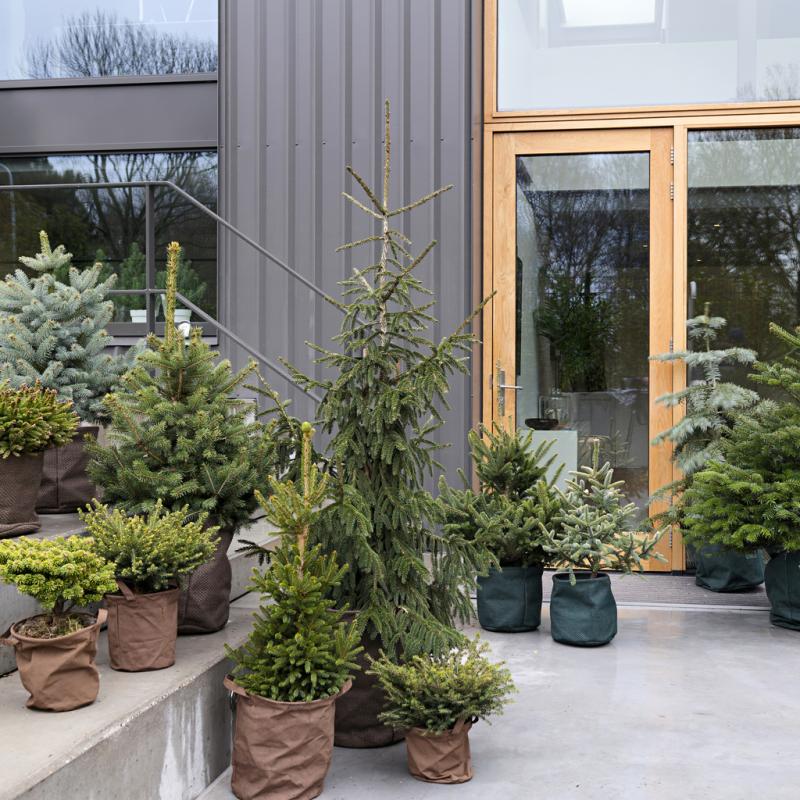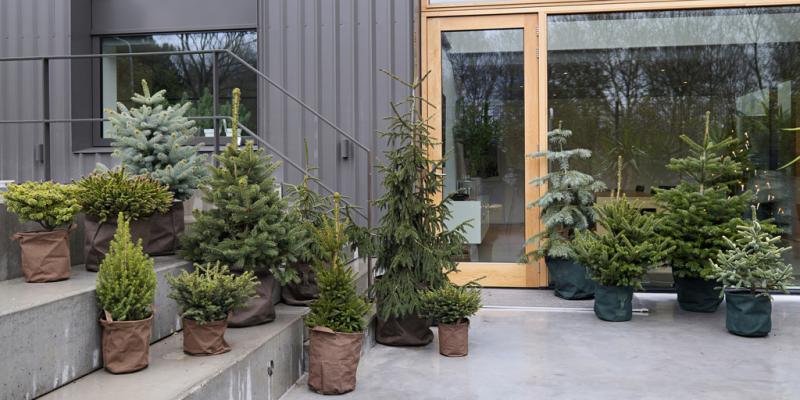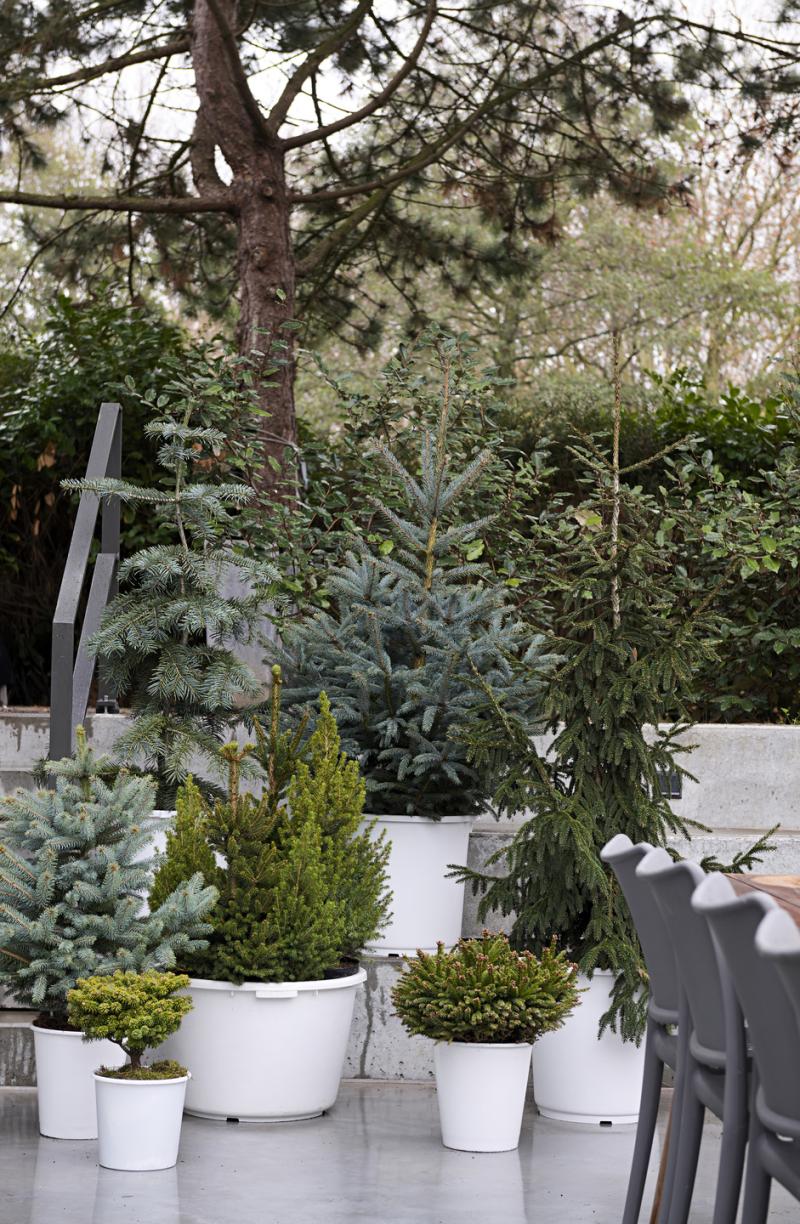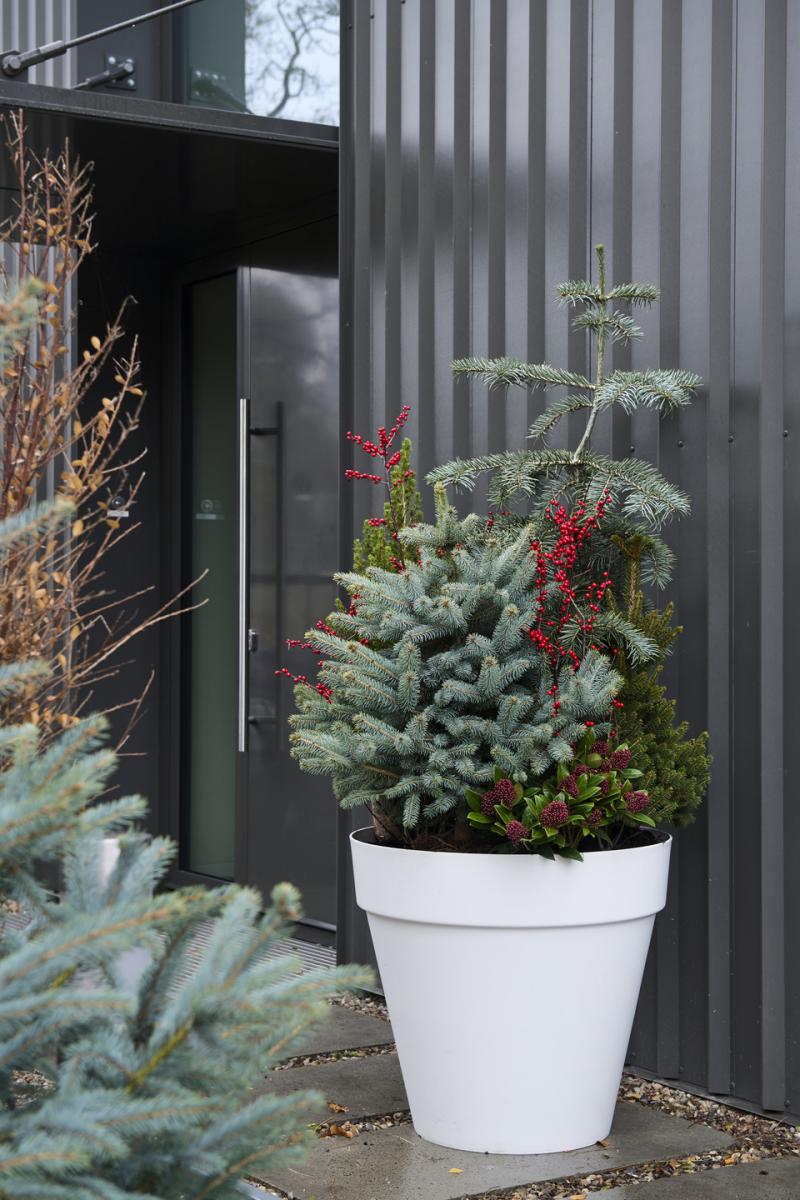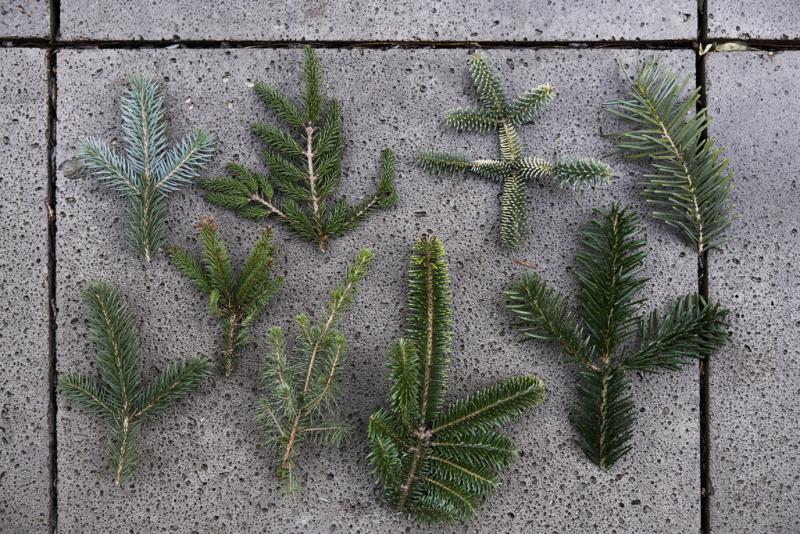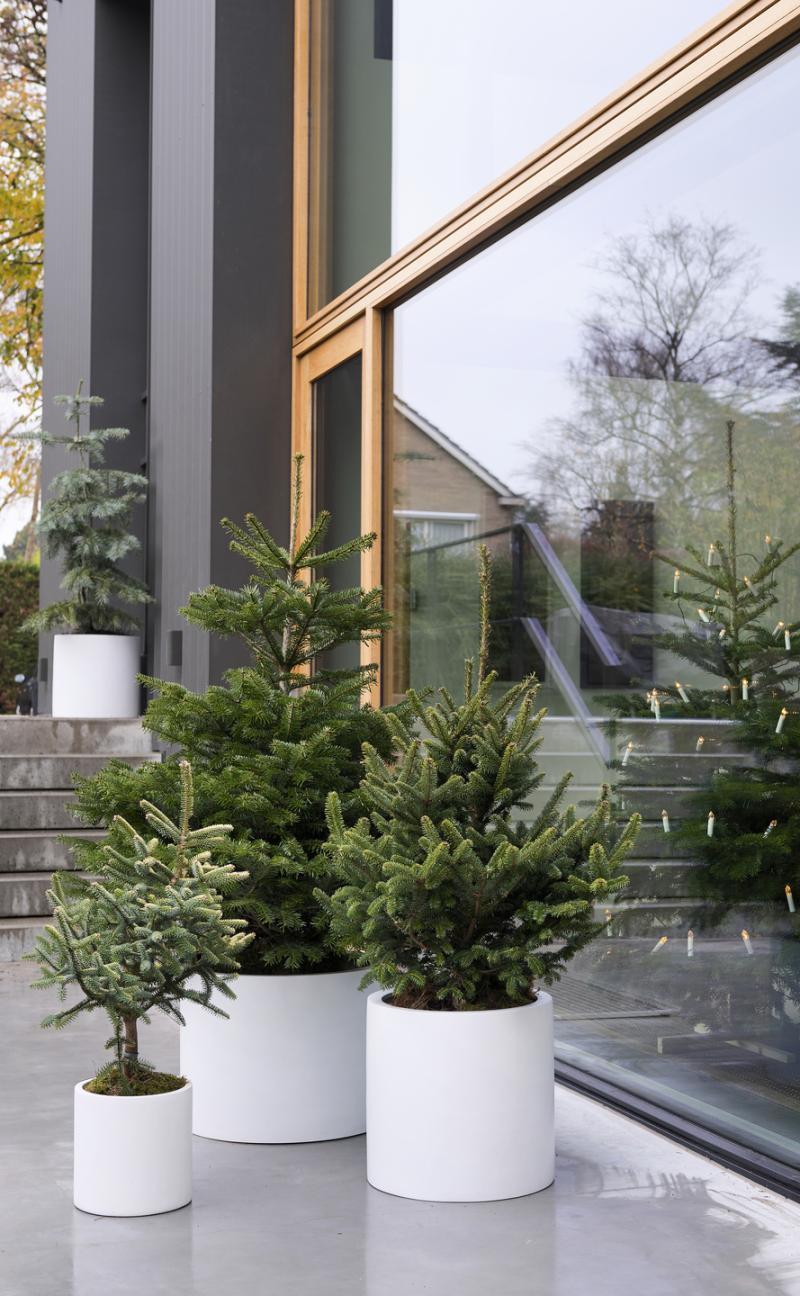Festive Pines: December Garden Plants of the Month
Not just for the festive season, but beautiful all year round: the spruce and fir tree help create a variety-filled patio and garden.
Spruce (Picea) and fir tree (Abies) are the real stars in December, but don’t overlook what they can offer during the rest of the year in terms of greenery and interesting points of focus in the garden. The range is extensive, and every pine tree has its own personality. There are species that look like they’ve come straight from a Japanese garden, interesting silhouettes with hanging branches for a bit of theatre on the patio, and beautiful full fir trees with a bluish grey tone that lights up beautifully in the moonlight. Even without decorations or fairy lights they already look stunning, and they offer constant greenery in the garden throughout the rest of the year as well.
Origin
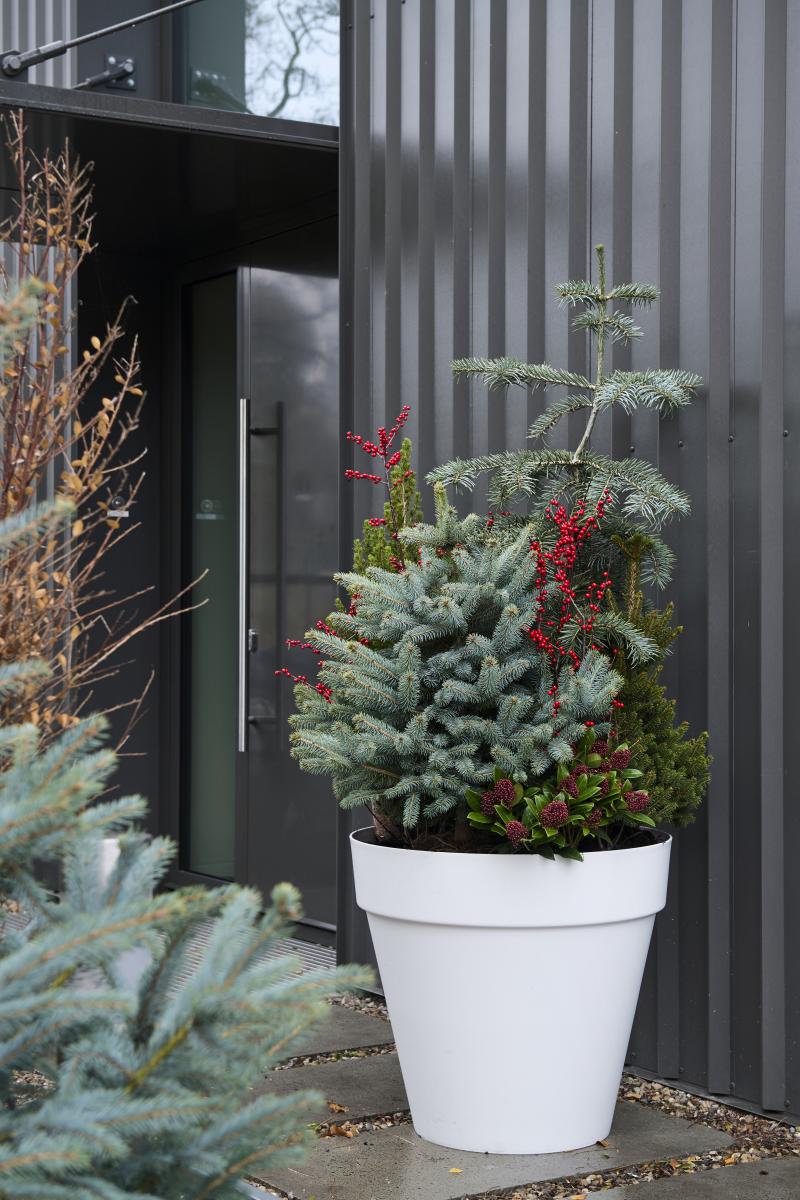
Festive Pines assortment
Spruce is officially a hardy needle conifer, but it looks like a true pine tree, often complete with cones below the branches. It can have a classic pine shape, with layered branches that stretch out around the stem, but they can also be spherical, trained as a pyramid or have hanging branches. A selection are described below:
Norway spruce (Picea abies) is the most commonly sold spruce. The tree is often offered without roots which means it needs to be placed on a wooden cross or Christmas tree stand. This classic Christmas tree starts at 50 cm. The decorative value is particularly determined by the arrangement of the branches and the tree’s shape. The disadvantage of this species is that it often sheds a lot of needles after a while. Placing the spruce in a stand with water or choosing a tree with roots can delay this process.
White spruce (Picea glauca 'Conica') is an attractive, compact, pyramidical tree. The needles are green and densely packed and the tree grows slowly. Characteristics: prone to aphids, needles pointing in all directions with a rough twig, smells like blackcurrants. Some larger sizes are grown in the field and are then placed in pots. Most of the smaller sizes are grown in pots and sell well in flower shops because of their attractive smaller, manageable size. It’s the ideal mini Christmas tree for use as a ready-decorated tree.
Serbian spruce (Picea omorika) is a slender upright yet compact Christmas tree with elegant branches. Needles are 1 to 2 cm, bright green on top and blue underneath, lending a blue tone to the tree. The needle stay on the tree better than with a Norwegian spruce. Rooted trees can be used after Christmas as an attractive solitary tree in the garden, which can reach a height of 8 to 10 metres.
The fir tree has long, flat needles. The colour is greyish green, sometimes with a silvery tone. Fir trees have cones on the branches that partly fall apart, leaving the core standing. Depending on the species it can grow in a narrow pillar shape or in a classic Christmas tree form. The three most important are listed below:
Nordmann fir (Abies nordmanniana) is increasingly being sold as Christmas tree, and is also used widely for festive foliage. A slightly more expensive tree, but very decorative with its shiny dark green top surface and grey underside. The tree suffers less needle shed, and has an attractive arrangement of the branches for positioning decorations and lights. Planting rooted trees in the garden later is possible, but be aware that Nordmann can reach a height of 20 metres.
Noble fir (Abies procera ‘Glauca’) has an attractive bluish green colour, coarse, soft needles and a strong fresh scent. This species is often used at Christmas.
Korean fir (Abies koreana) is an exceptionally attractive Christmas tree that may already be bearing indigo cones at the selling stage, unlike other Christmas trees. The needles are shiny green on top and have a silvery white underside.
What to look for when buying Festive Pines
- Check that the height, width, branching and shape of the tree are in proportion.
- With a rooted tree it is important that the root ball is sufficiently damp and that there are enough roots on the trunk to allow the tree to continue growing.
- The festive pines must be free of diseases and pests such as aphids.
Care tips for customers
- Festive pines can tolerate both shade and full sun.
- Spruce and fir tree prefer slightly damp, moderately nutrient-rich soil.
- In order to be planted out in the garden, there must be a sizeable root ball and the tree must have been given enough water and plant food for shrubs indoors.
- Planting the tree deep and giving it extra water and food make it most likely to carry on growing.
Sales and display tips
Mix different species and sizes of spruce and fir tree so that the different shapes contrast nicely. The container can be understated: brown, black or grey emphasise the natural aspect of the trees and makes them look extra green. These colours also fit with the style trend in which restraint and clarity in the garden are important. With individual spruces and firs trees you can easily add November’s Red Classics as Christmas approaches to create an appealing festive look.
Festive Pines images
You can download and use the images below free of charge if you credit Thejoyofplants.co.uk.
Instagram: @thejoyofplants
Facebook: @thejoyofplants
Twitter: @thejoyofplants
Festive Pines poster
You can download the poster using the link below:
Festive Pines A3 Poster

